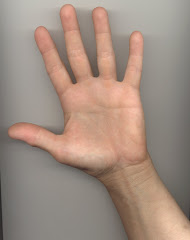I haven't posted in quite a while but have been busy in the studio -- and also making the monthly rounds as Artist-In-Residence teaching artist at several central Montana rural schools. The AIR job only takes me out of town on six days each month plus five days that involve just an hour or so of teaching teaching time just a few blocks from where I live in town. What it all boils down to is that, unlike last school year, I'm getting a fair amount of studio time.
So, what is happening at the studio? Lots! Besides painting more cat portraits and some landscape/skyscapes, I've been having a great time experimenting with a process generally refered to as "kitchen lithography."
Hmm, lithography you say. Expensive, you say.
But no! This "litho" process uses aluminum foil in place of the expensive limestone and soda pop instead of acid for the etching part of the process. The only other "tools" needed are some rags, a couple sponges and a baren or spoon. (Note: The baren or spoon sustitute for an etching press. I have a press so everything I'll post regarding "Kitchen Lithography" will use the press unless I state otherwise.) Other supplies include soap, soft brush, litho crayons or pencils, ordinary cooking oil, etching ink and suitable paper.
Years ago, I took a half year of lithography class at the (then) Alberta College of Art in Calgary, Alberta. Rummaging around in some storage boxes in the studio, I found my stash of remaining litho crayons (sticks, pencils and disks) plus my Tamarind Lithography textbook (great reference source!) I also have a supply of etching paper -- plus a big assortment of other kinds of papers. Two plexiglass plates (one to roll-up ink and one to hold the aluminum foil) and I was ready to give Kitchen Litho a try. Which I did. Over and over again.
Here are a few of my print experiment results:
This first one was drawn on the foil with soap and brush. Just simple quickly done cat lying down printed on yellowish domestic etching paper. The three images are the result of three progressive print pulls without re-inking between so the print is progressively lighter in value (I did, however, re-sponge the plate to push around the remaining ink.) (click for larger view)
The next print (at right) was pulled from an aluminum foil plate drawn on with a #1 litho crayon (I have #1, #3 and #5 crayons.)
As with all of my kitchen lithography experiments, I kept the drawing simple and worked very rapidly, not worrying about how the drawing looked as far as accuracy or proportion, etc.
This one was pulled on a snowy white card stock (which is why the edges of it do not show up on the blog/computer screen.)
(click for larger view)
The next print shown below was pulled from an aluminum foil plate drawn on with a #1 litho pencil (I have #1, #3 and #5 sticks which are thin like pencil lead and go into a special holder---sort of like a mechanical pencil.) I like this image. I based the drawing on one of my existing oil painting sketches. It is pulled on a white card stock just like the print shown immediately above. I feel like this print starts to approach some of the qualities I'm searching for.

The next print experiment used the same plate with still intact soap drawing of the cat reclining as shown in the first print above. For this print, however, I laid a cloth mesh over the image area and then ran it through the press (first image.) Then I removed the cloth mesh and printed again (without re-inking or responging) for the second image shown below. The results on the second print are of interest to me as I seek ways to make this process unique with my work. Both are printed on yellowish domestic etching paper. (click for larger view.)


The last print posted below was done with the #5 litho lead in holder. Because it's the hardest litho grade of what I have, it made finer lines and I was able to layer lines without "clogging" them. It's a freely drawn shell form. The lower half of the foil accidently lifted from the plexiglass when I was removing the litho crayon in the last step before inking. It got pretty wrinkled and I had to re-flatten it out carefully -- but even at that, I lost some of the lower left of the original litho drawing of the shell. Left of the shell print below is the foil plate used to make the print (click on image for larger view.)





















